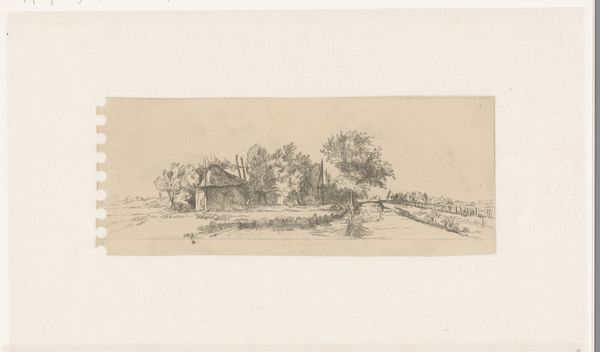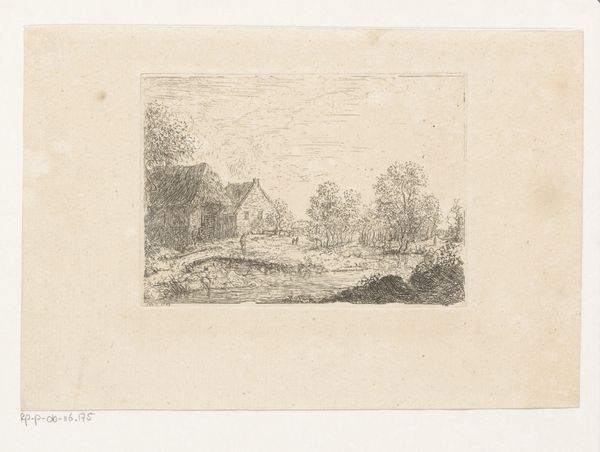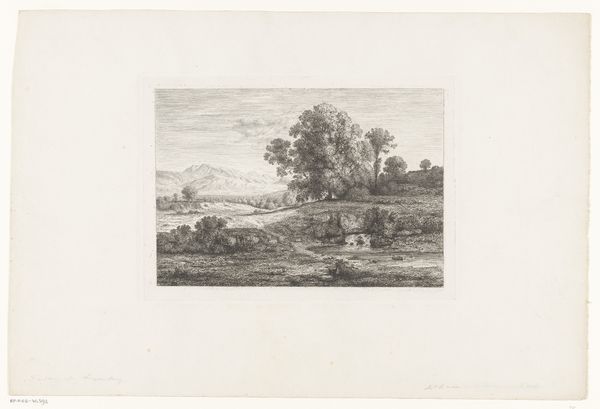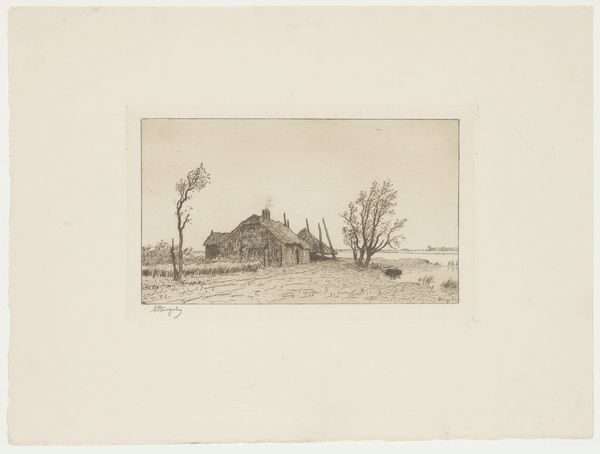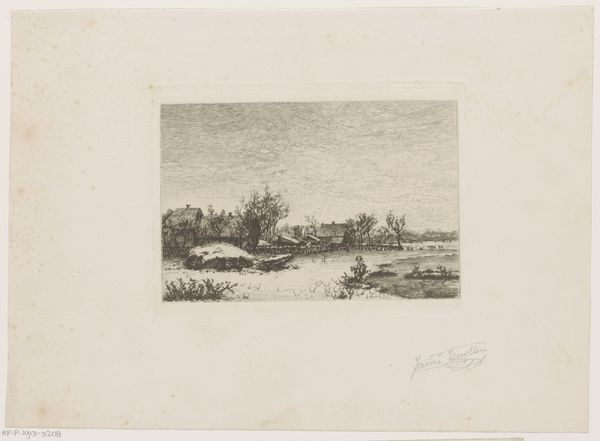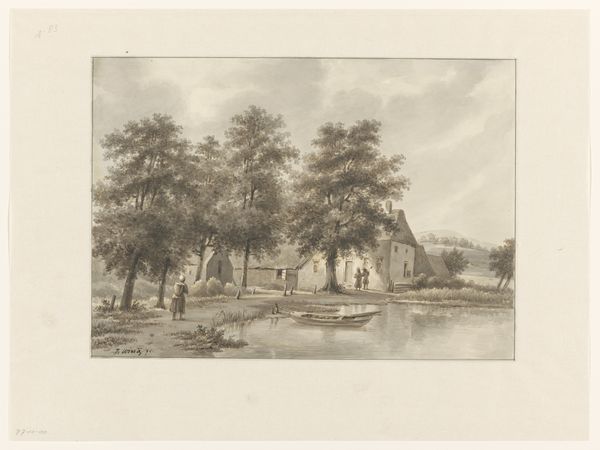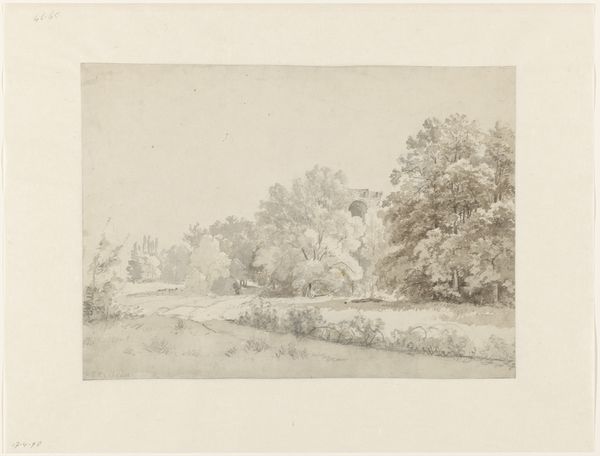
Cottages and a hay barn on the Diemerdijk with a flock of sheep 1728 - 1786
0:00
0:00
claudehenriwatelet
Rijksmuseum
drawing, print, etching, paper
#
drawing
#
dutch-golden-age
# print
#
etching
#
landscape
#
paper
#
realism
Dimensions: height 127 mm, width 193 mm
Copyright: Rijks Museum: Open Domain
Editor: This etching on paper, "Cottages and a hay barn on the Diemerdijk with a flock of sheep," by Claude Henri Watelet, made sometime between 1728 and 1786… I find its stark simplicity very appealing. What stands out to you? Curator: I'm drawn to the production of this landscape. Think about the labor involved in etching – the precise application of acid to the metal plate, the inking process, the physical act of printing. The image depicts a rural scene, seemingly removed from industry, but its creation is deeply embedded in material processes. How does the subject matter itself—agriculture—connect to the broader socio-economic conditions of the time? Editor: That’s interesting; I hadn't considered the physical effort behind it. The scene feels almost timeless, but of course, it represents a specific moment in history. Do you think the choice of etching reflects anything about the subject? Curator: Absolutely. Etching, as a replicable medium, makes this rural scene accessible. Consider the market for these prints. Were they primarily for an urban audience romanticizing the countryside? The labor isn't just Watelet's but also that of the farmers, whose work the etching depicts. Are they romanticized here? Also, note the paper used. What kind of access was there to it? Its quality would impact the final product and its reception. Editor: So, we're looking at this not just as a picture of a landscape but as a record of material and economic relationships? It feels almost…deeper now. Curator: Precisely. The beauty of the landscape obscures, but cannot erase, the conditions of its making, both within the image and of the image itself. Considering materiality unveils these power dynamics. What further avenues of inquiry does this perspective reveal for you? Editor: It pushes me to consider all the processes and materials necessary to produce the final art piece! Thanks; I’ll keep that in mind going forward. Curator: Indeed! Hopefully, you will. Keep interrogating the materials; they always tell a story.
Comments
No comments
Be the first to comment and join the conversation on the ultimate creative platform.


